Ice, water and rockGlacier de Tsanfleuron is a small and unspectacular mountain glacier somewhat spoilt by touristic installations in its upper part (ski lifts, tracks of caterpillar vehicles etc.). However, the snout area is rarely visitted, unspoilt and offers a variety of glaciological features. |
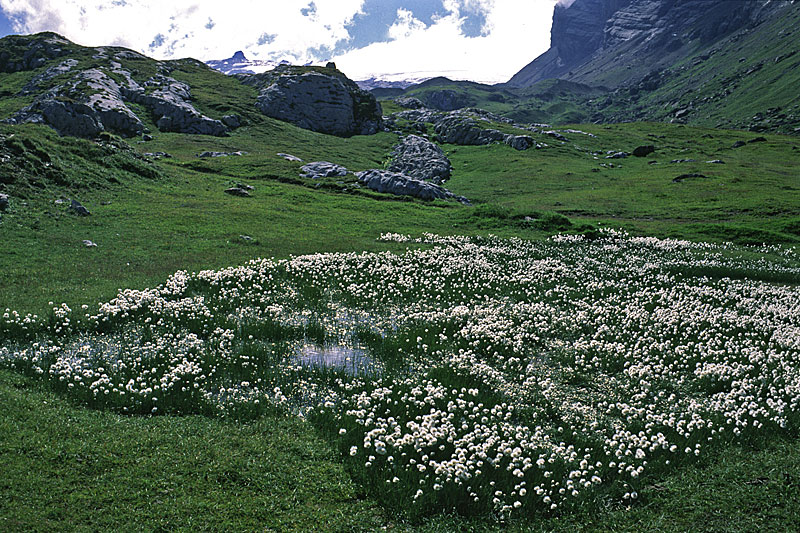 Near Sanetschpass (Col): Eriophorum scheuchzeri in a small pond east of the glacier. Tour St. Martin (2908m) on the far left, Glacier de Tsanfleuron (overexposed) on the horizon (centre). | 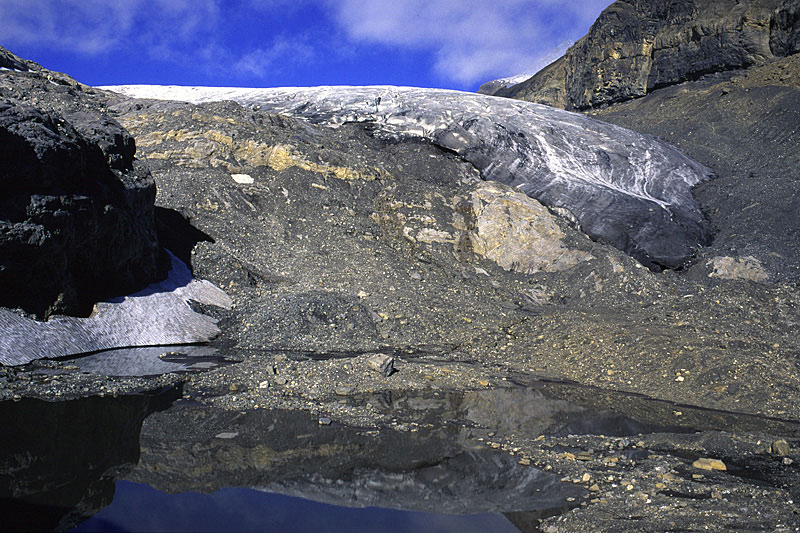 Small proglacial lake in August 2004, only a few dozens of metres from the glacier tongue, where a small glacier portal is visible (cf. the next 3 photos). | 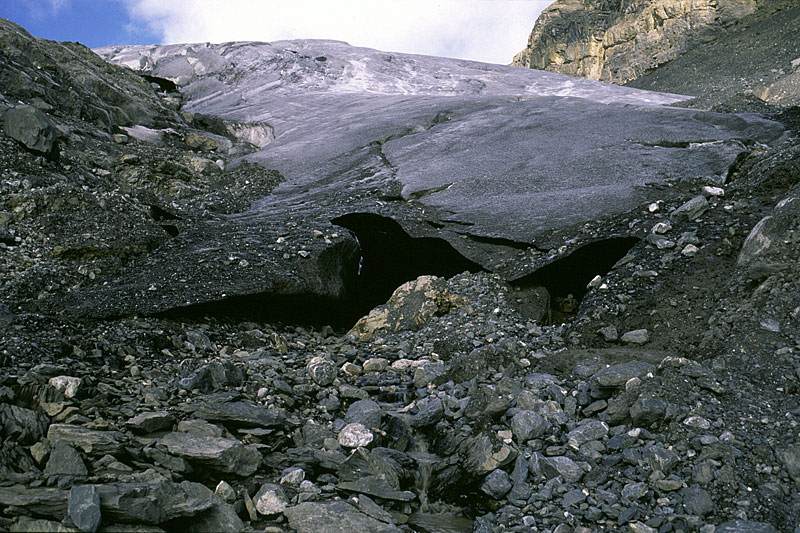 In front of the glacier portal. The stream carries little runoff because most of the meltwater is lost through sink-holes beneath the glacier. | 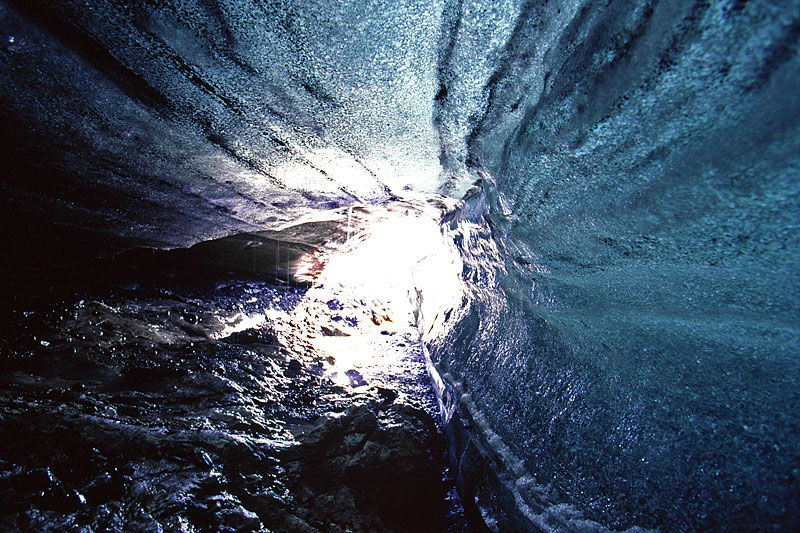 View from under the glacier tongue towards the portal. Daylight filters through the basal ice which contains large ice crystals. |
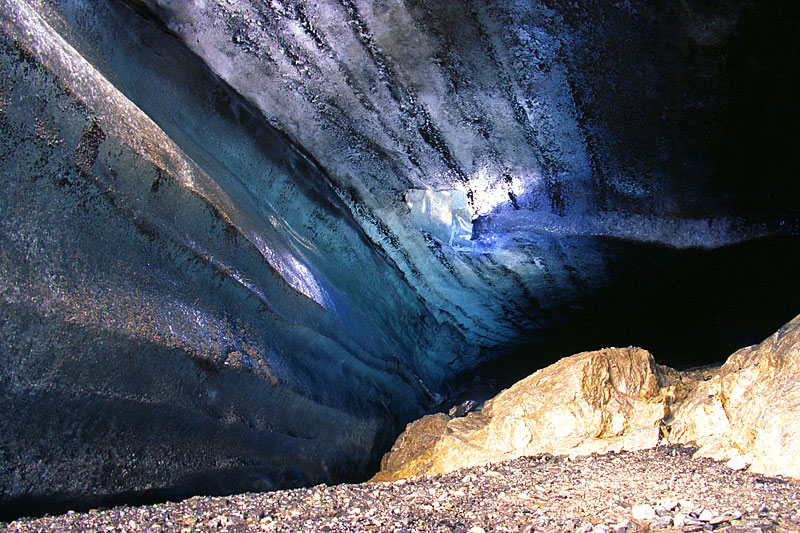 When the ice flows over obstacles, these cause hollow grooves in the basal ice. We are inside one of these. Bright light enters from the glacier portal, which is right behind us. | 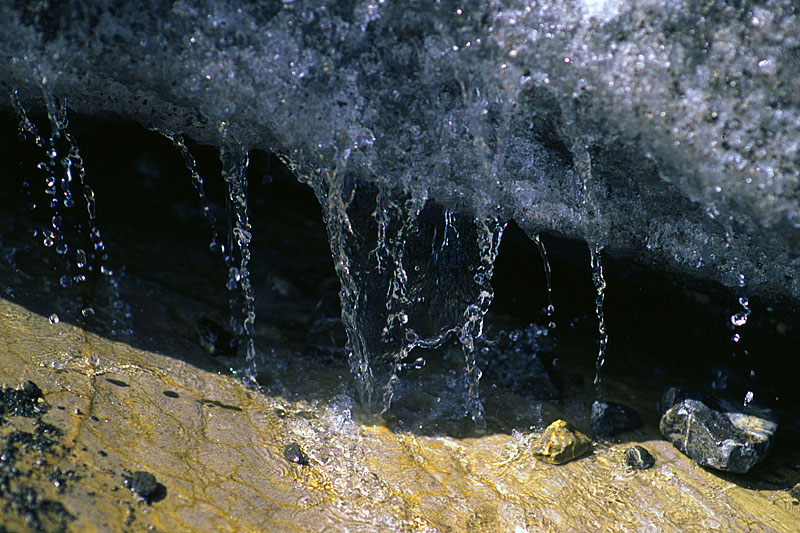 Later in the morning the air temperature increases, and so does ablation. Water flows off the ice onto the limestone bedrock. | 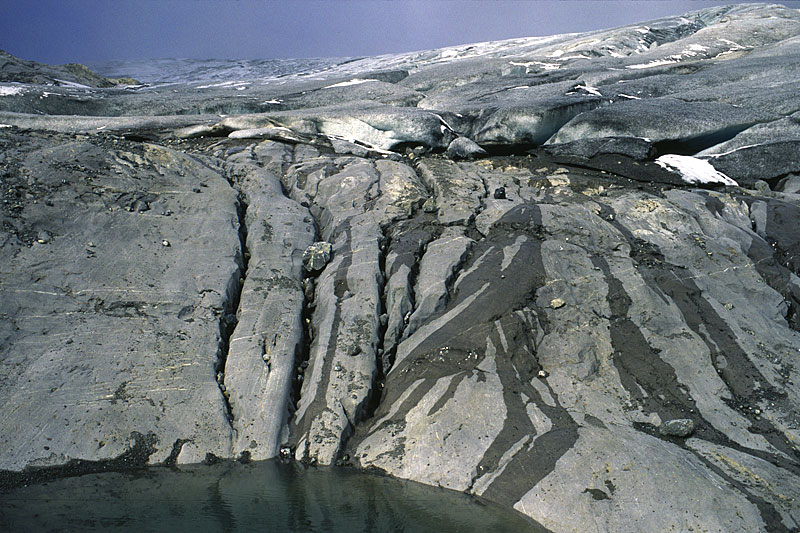 Glacial meltwater has caused deep, narrow channels in the limestone. Such channels are formed because limestone is rather soluble in water. | 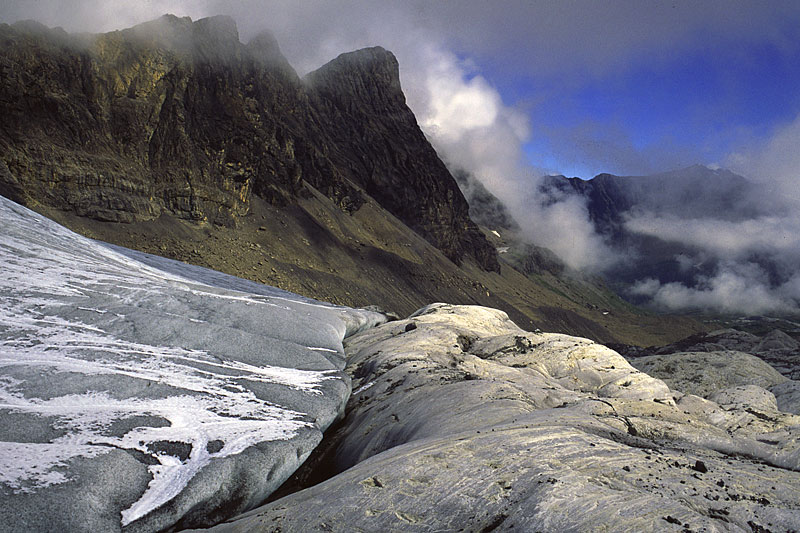 Great roches moutonnées in front of the glacier. In the background the southwest ridge leading up to the Santeschhorn, also known as Mont Brun. |
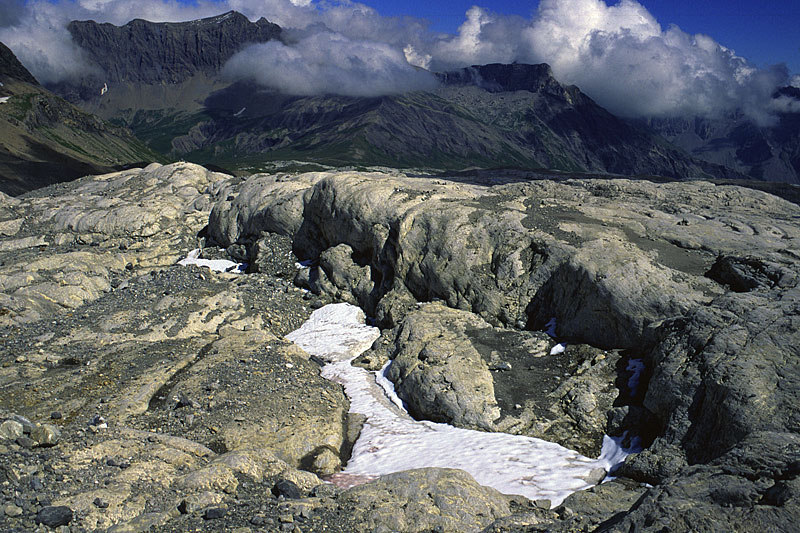 "Elephant backs" in the glacier forefield. On a snowpatch in the foreground reddish algae (Chlamydomonas nivalis, cf. next photo) were found. | 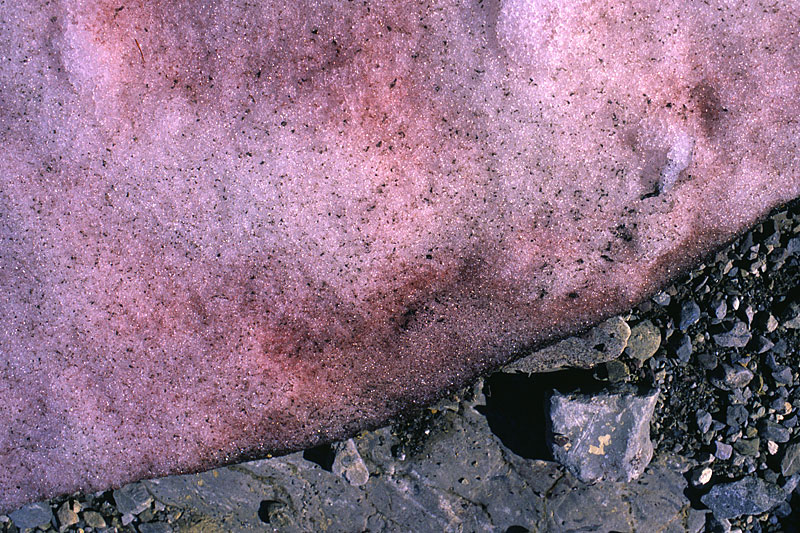 Red algae (close-up; Chlamydomonas nivalis) in front of the glacier tongue. The image is about 30 centimetres wide. | 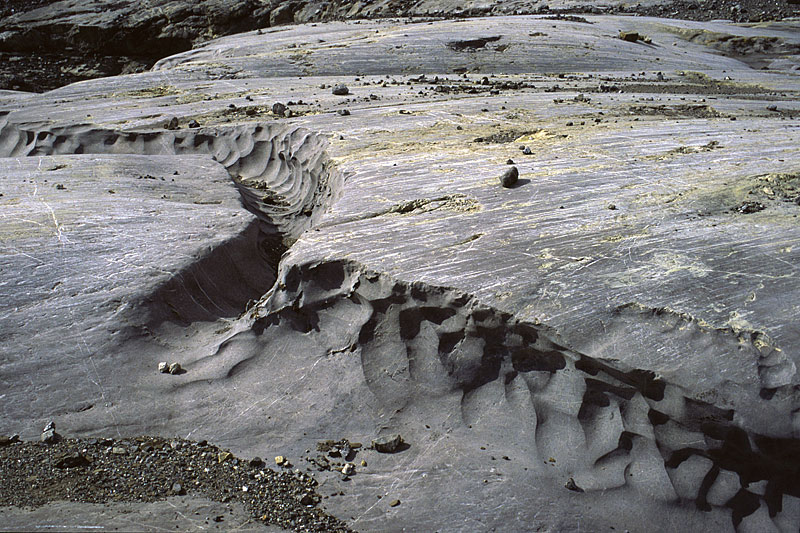 Complex shapes on rock surfaces previously covered by ice. Scalloped, concave shapes were caused by turbulent water flow and dissolution of limestone under the glacier. | 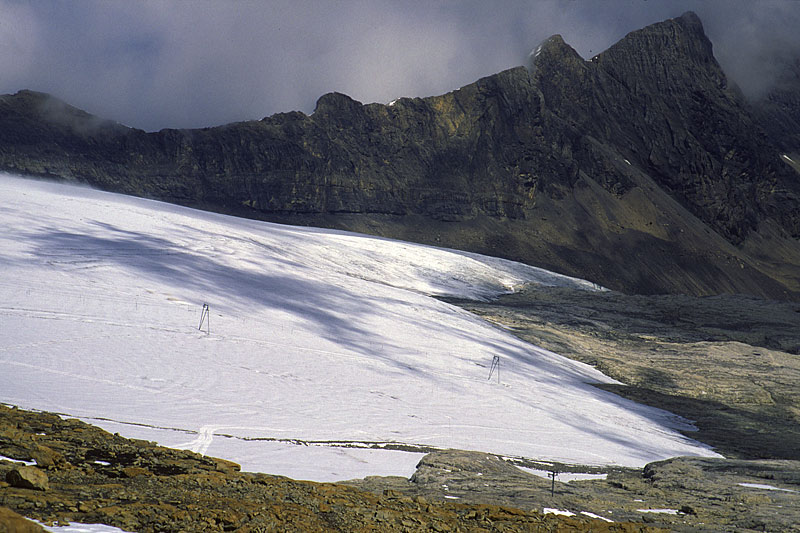 Lower part of Glacier de Tsanfleuron, overview. Pylons of ski lifts are anchored in the ice and allow winter sports, depending on the amount of snow left, well into summer. |
| Photos Jürg Alean, August 2004 |